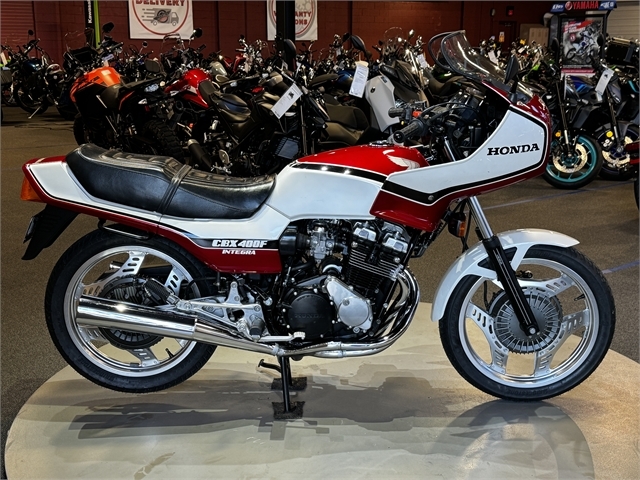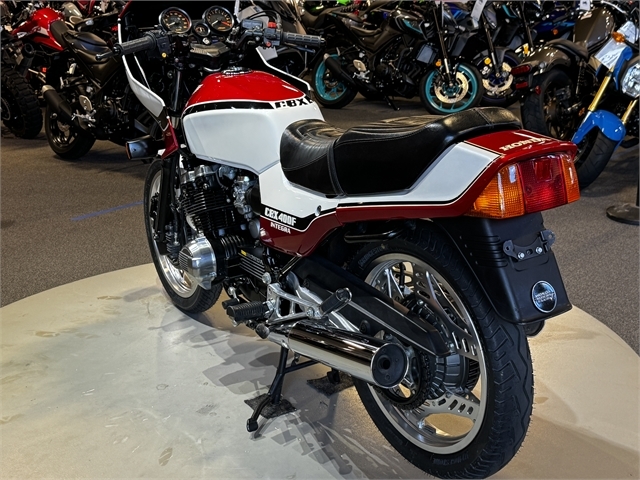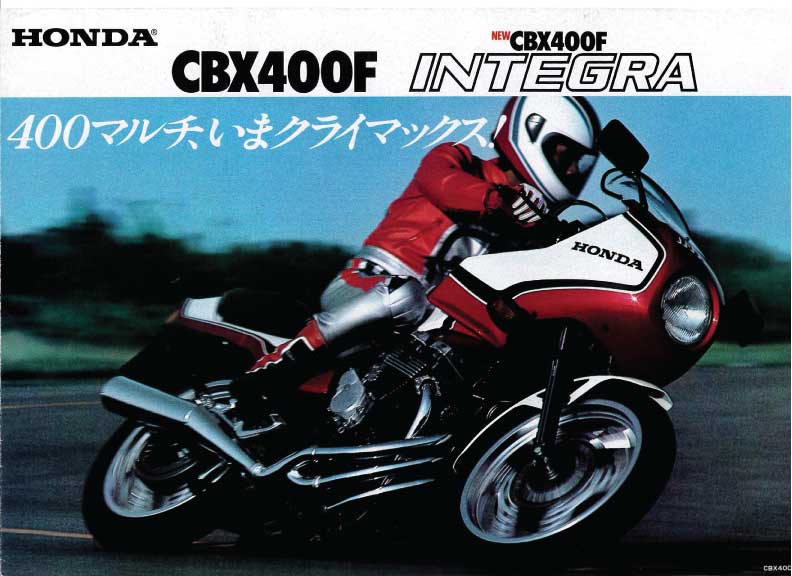
I’ll get this out of the way right up front: today’s Featured Listing 1982 Honda CBX400F Integra is not powered by an inline six engine. In fact, I’d long dismissed the CBX400F as being some sort of marketing gimmick, with the CBX name used to draw attention to a much more down-market bike. Instead, it’s a very polished, technologically-advanced, Japanese domestic market bike designed as a then-modern follow up to their revered CB400F, a bike that is currently still shockingly affordable and would make for an excellent starter classic, especially for anyone of shorter stature. But I digress.

Introduced in 1981, the CBX400F was powered by a very oversquare for the period 55x42mm, 399cc air-cooled inline four with dual overhead cams and four valves per cylinder, backed by a six-speed gearbox. Honda claimed 48hp at what reviewers called a “screaming” 11,500rpm. The exhaust is notable for not being a simple 4-into-1 like the original CB400F. Instead, it features several strategically-placed crossovers to maximize midrange power. Brakes were inboard front and rear, although I’ve never really understood the concept on a motorcycle. On a car, inboard disc brakes remove the discs and calipers from the wheel hubs, significantly reducing unsprung weight. On a bike, they’re still… attached to the wheels, and therefore still sprung weight. And enclosed, making cooling potentially much more difficult. Still, they look cool and, even if they’re just an 80s dead-end, bikes of the era were littered with elements of almost compulsive technological advancement and, to me, that’s just part of their charm.

Speaking of “80s dead-end technology:” front suspension was air-assisted with TRAC anti-dive in one of the legs, and the rear was Honda’s Pro-Link, attached to an aluminum swingarm, with 18″ ComStar wheels featured at both ends.The “Integra” version of the CBX400F seen here was introduced in 1982 and included a real novelty for Japanese sportbikes at the time: a fully-integrated fairing, along with innovative self-cancelling turn signals. The style of the bike strongly resembles the second-generation of the bigger, more touring-oriented CBX, which I think is definitely no bad thing.

Seller
Several innovations make this an exceptional investment:
Fairings are common today but this was the first Japanese sport motorcycle with a standard factory frame mounted fairing giving it the Integra name. The naked version is somewhat attainable in Japan but a stock Integra is super rare even in Japan. The next thing that will catch your eye is the inboard disc brakes on Comstar wheels. Then there’s the first anti-dive mechanism (TRAC) and mono-shock rear suspension. Also rare for the time is Honda’s self cancelling signals,
This example is totally stock and “unmolested” with original paint and decals. There are some very minor flaws on the decals near the from signals. This is a Type 1 CBX as confirmed by the VIN and the all silver Comstar wheels. The odometer indicates 6500 kilometers converting to just over 4000 miles.
In preparation for sale after a few year’s storage, we did the following:
Replaced front and rear tires
Replaced battery and checked charging system
Rebuilt both master cylinders
Rebuilt both brake cylinders
New air and oil filters
Oil change
Clean and rebuilt carbs
New speedo cable
New spark plugs
The bike starts and runs as new!

This is a really good-looking little machine, and positively dripping with 1980s style and charm. Sure, the 400cc inline four means the Honda CBX400F Integra is relatively slow, by modern standards. But honestly, so is the original CBX. That big, beefy 1047cc inline six? It made just 105 claimed horses and had nearly 600lbs of wet weight to push around. Dry weight of the unfaired CBX400F was just 400lbs, and the bike made a claimed 48hp, so it won’t be the performance slacker it might look like at first glance.
This is an exceedingly rare motorcycle in any market, particularly the US: the bike was never imported here and I actually had no idea this Integra model even existed, although I was at least passingly familiar with the CBX400F. So how much does such rarity cost? The seller is asking $39,000 for this 4086-mile, all-original example. You aren’t likely to find another anytime soon.
-tad








